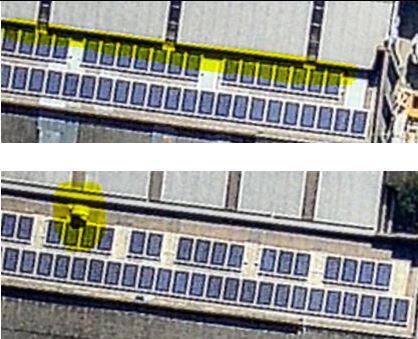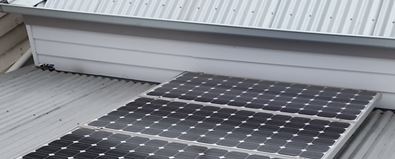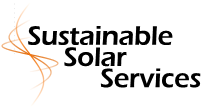Best Solar Panels and Inverters
Best Solar Panels and Inverters – Typical Pitfalls in the Solar Industry.
Have you heard of friends who were not happy with their solar system or the installers despite having supposedly opted for the best solar panels and inverters? We receive many inquiries from people who experienced early component failure after buying a solar system or who did not see the expected savings. Often the solar installers are then not in business anymore and sometimes the component manufacturers neither, leaving them with no warranties.
The following article shall give a brief overview on typical pitfalls in the solar industry to help truly select the best solar panels and inverters together with ensuring optimal system installation.
Solar System Pricing.
The pricing for solar systems depends on the component selection and the quality of the installation. Make sure to choose high quality components, since solar systems are long-term investments of around 30 years lifetime. Normally solar companies include the solar rebate already in their prices, which means that after installation you sign them the solar rebate over. You can check how much solar rebate you are eligible for and should be given by the solar company by checking how many STC certificates you get for your system size and location over 15 years and multiply it by the current STC price.
General solar system pricing estimates can be seen for residential and commercial systems updated monthly on Solarchoice. However, beware of portals that offer 3 free quotes, since all three quotes that you will get will be inflated by the commission the website takes from the installers, which in case of e.g. Solarchoice is up to 5%.
Financing options for solar systems are mostly available, however, the interest rates range from 7% to over 10% p.a. and are therefore very high. However, if it means that the solar system pays for itself with its savings and is therefore cash-flow positive, then why not?
Site Suitability.
First of all it has to be seen whether the roof is suitable and if so, what the maximum system size is that can be installed. In order to gain optimal yield from the system the panels should be facing towards the North and tilted at 30 degrees or at the normal residential roof angle of 22 degrees. Ideal roofs are facing North, North-West or North-East and have a tile or tin cover. Slate is usually not suitable for solar installations.
Facing the panels towards North makes the system produce a maximum amount of energy during mid-day. However, since the feed-in tariff your electricity retailer pays for energy fed into the grid is only 5ct/kWh as compared to the around 30ct/kWh households typically pay, it is crucial to design the system for a maximum of self-consumption. Therefore, if you are not at home during the day, but rather in the afternoon, it may be more beneficial to orientate the panels more towards the West. For increased morning production they should be facing East.
Shading is very detrimental for solar systems. The reason for it is that the cells inside the solar panel are connected in series, meaning that if one cell is shaded, it will affect up to 1/3 or ½ of the whole panel. If a whole row of cells is shaded, the entire panel can be out of operation. Since the solar panels are also connected in series, the shading of only one row of cells can lead to the whole panel string not producing anymore. Micro-inverters or smart panels (optimizers) may help tackle shading situations, but are costly.
Therefore is has to be carefully assessed when and where shading situations exist and how it can be worked around them. Google Maps or Nearmap are good tools for that and the Australian PV Institute also set up a shading analysis tool for Melbourne Metro. Some pictures of very detrimental shading situations are shown below:
 |
 |
The solar systems need inverters in order to convert the direct current (DC) produced by the solar panels into alternating current (AC). These inverters have to be located between the solar panels and a switchboard and are either single- or three-phase. Ideally there was space next to the main switchboard or another distribution board to locate the inverter near the solar panels to avoid cable losses and increased cost. The switchboard needs one empty slot for single-phase inverters and three empty slots for three-phase inverters.
In order to operate a solar system, a smart meter needs to be installed. If you do not want a smart meter, then solar may not be an option for you. However, in Victoria, most dwellings have smart meters already. However, it is best to check this beforehand, since otherwise costly meter changeovers may incur when the system is installed.
System Sizing & Design.
Firstly it is crucial to understand your energy needs in order to estimate a suitable system size and the expected savings. To do that, have a look at your electricity bill, note down the amount of kWh you consume per day together with the peak and off-peak tariff. Peak tariff applies during weekdays only, usually from 7am to 11pm. Knowing how much you consume per day, you can size your solar system. A typical system in Melbourne produces around 1,350kWh per installed kW of solar panels, which makes around 3.7kWh/day. It produces about three times more energy during summer days than in winter and mainly during mid-day, not in the evening when most of domestic demand occurs.
As a rule of thumb, good system designs which lead to short payback times look to cover 50% of the overall demand with solar. Therefore, if your demand is around the 20kWh/day, a solar system of around 3kW may be suitable for you. However, this depends on how much energy is used during the day, when the solar system actually produces energy. A good way to look into this is to request the interval data from of smart meter from your retailer. A guide to doing this can be found here.
A typical solar panel in the market is about 1m x 1.7m in dimensions and is rated at 250W. If you have flat roofs, the use of tilt frames will increase the yield due to the better incidence angle of the sun, improved panel cleaning during rain and better ventilation of the panels. The cooler the panels, the better they perform. Very patchy roofs lead to increased installation effort and cable runs which lead to higher costs.
The number of different panel orientations a system can have is limited to the number of MPPT’s (Maximum Power Point Trackers) of the string inverter. For small systems (1…3kW) the inverters typically only have one MPPT, for bigger systems above 3kW they usually have 2 MPPT’s. Consult the inverter datasheet if you are unsure. This MPPT adjusts the solar panel voltage to the maximum performance. However, if panels of different orientations (East and West) are connected to one MPPT, then both arrays work at reduced performance. Each separate orientation needs a dedicated MPPT to ensure high yield. Make sure your installer understands this and talks you through his design approach.
Solar panels are rates at Standard Test Conditions (STC) which define very high irradiances and very low temperature. This means that the solar panel rating will very rarely be reached in real life since the panels work at lower irradiances and higher temperatures, both reducing their efficiency. Due to that the solar panel capacity is normally oversized to the inverter capacity, to ensure that the inverters still work at high part loads and efficiencies. Typical values for oversizing of the solar array is around the 0% to 33%, check this with your system designer.
The correct sizing of solar panels and inverters depends furthermore on the temperatures expected on site and certain voltage and current threshold. Every design should be approved by the inverter manufacturer in order to ensure that the warranty is valid. The most popular inverter suppliers offer online sizing tools and your installer should provide you with a printout of such which shows that the system configuration is according to best-practice and not too much over- or undersized.
Solar panels and inverters need to be on the Clean Energy Council approved component list and the installer needs to be Clean Energy Council certified in order for you to be able to claim the 30% solar rebate for your system.
Battery storage can be beneficial, especially if you are off-grid or not at home during the sunny mid-day.
Best Solar Panels.
There are hundreds of solar panel manufacturers in the market. Luckily it is fairly easy to select the best solar panels, since the most reliable solar panel manufacturers are rated as “Tier 1” panels. This Tier 1 solar panel list is issued by Bloomberg Finance frequently and the rating as such brand ensures that the panel manufacturer is:
- Vertically integrated from silicon wafer to module.
- Has been manufacturing solar panels for more than 5 years.
- Uses a high degree of automation.
- Invests heavily into R&D.
The solar panels are considered bankable by lenders who finance large-scale solar plants. We recommend only choosing panels from this list in order to get the best solar panels in the market.
Typical warranties are the following:
- 25-30 year linear performance guarantee of around 80% of initial panel capacity after 25 years.
- 10-12 year product warranty against material defects.
- Often the panels are reinsured against supplier bankruptcy. Due to the long warranties provided, make sure such reinsurance by e.g. Powerguard or Chubb is in place.
- Positive tolerance of solar panels ensures that you do not get less for your money. Therefore watch out in the datasheets that your panels are rated (0…+5W or 0…+3%).
There are some sales pitches you should watch out for, since they can lead to reduced value for your money.
Monocrystalline Solar Panels.
These types of panels are often stated to perform better than their polycrystalline counterparts. This is partly true when it comes to low-light conditions, and they have a higher efficiency overall. However, this only means that in order to get the same power out of a panel, you only need more roof surface for polycrystalline panels with less efficiency.
Since this is usually not that much of a problem and monocrystalline solar panels are more expensive than the polycrystalline, most solar panels currently in the market are polycrystalline since they provide best value for money. However, if you want to get most power out of limited roof space, monocrystalline panels may provide a better solution.
German Solar Panels.
The reputation of German engineering is very good and this leads to many freeloaders getting onto that train to gain a competitive edge and sell their panels to a higher price than what they are worth. Regretfully most European solar panel manufacturers went bankrupt due to the string Chinese competition. The only German produced solar panel comes from the company SolarWorld.
Any other company claiming to be a German solar panel is certainly produced somewhere else. Among those are high quality panels from German companies that were bought out and production relocated, such as Q-Cells or Solon. However, there are many inferior solar panels and problems have been reported with pseudo-German solar panels from brands like Hanover Solar, Duisburg Solar and Munsterland Solar among others.
Most high quality solar panels nowadays come from China, as well as many low quality ones. Make sure you rely on the Tier 1 solar panel list and check whether the company is likely to go bankrupt soon, to be sure to make a sustainable choice.
Black Solar Panels.
Such panels are marketed as being superior than those with a white backsheet. This is generally not true and can usually not be proven when comparing the datasheets of both panel types.
Black solar panels are even expected to perform worse than their white-sheeted counter-parts since the black backsheet and frame will absorb more heat and therefore reduce the solar panel performance.
Black solar panels should only be chosen for aesthetical reasons, since elevated cost and reduced performance are otherwise prohibitive.
Smart Solar Panels / Optimisers.
These solar panels have DC-DC converters on their back which adjust their output voltage towards the same voltage level among all solar panels, independently of orientation, shading or capacity.
These panels cost around 30% more than normal panels and are usually therefore only of economic benefit compared to normal panels for environments where shading situations exist. In all other cases it is not recommended to opt for these due to their high cost.
Best Solar Inverters.
Solar inverters are the component in a solar system that is most likely to fail at least once during the system lifetime of around 30 years. Therefore the selection of the best solar inverters that are truly designed for longevity is recommended. There is no such list as a Tier 1 best solar inverter list, but historically European inverters have proven to be reliable.
The best solar inverter brands recommended by us are the following:
- Fronius.
- SMA.
- ABB.
Typical product warranties range between the 5 to 10 years. Anything less than 5 years should better not be touched, extended warranties from 5 to 10 years can usually be obtained and should be considered if not already included.
Micro-inverters have become very popular due to their excellent marketing. However, they are usually more expensive and have an efficiency of only around 95% compared to the 98% of string inverters. They are only really potentially beneficial if used in shaded environments. If your roof is not shaded, rest assured that you will not need micro-inverters.
For most systems string inverters provide the best value for money. This applies even more if the system size increases since micro-inverters pricing scales proportionally to system size.
Added value here can be remote monitoring interfaces which allow you to track the system production over your internet browser and contrast that against the predictions of the solar company. Most good inverter brands have such functionality included, but may need Wifi or Ethernet to be connected.
Implementation of high quality solar systems.
Solar systems are not off-the-shelf products and their longevity depends highly on the quality of workmanship. Regretfully it is very hard for consumers to know whether their solar installer will provide a high quality solar system or not. Workmanship warranties provided by the solar installer should be at least 5 years, better 10 years.
There are certain means which help evaluating whether a solar installer provides quality. First of all it should be asked whether they can provide photos and testimonials of reference installations. One of their recent customers should be called up to see what his experience was. Maybe you can even arrange for a system inspection first.
Secondly it is always better if your solar company has their own in-house installers for accountability and quality control. Ask them which installer will perform the installation and look him up here to ensure that he is CEC certified, maybe call him up under the contact details given to ensure he actually works for the company.
There are various solar industry associations that provide training even beyond the normal CEC accreditation requirement. An emerging best-practice accreditation is the Solar Gold Standard which ensures that the solar company follows a high quality approach to sales and implementation. Furthermore it can be checked whether the company is CEC and Solar Council member to judge on their integration in the solar industry.
Another means of determining how good the expected solar system quality will be is to demand to use an independent electrical inspector of YOUR choice. In Victoria solar systems have to get independently inspected, but many low quality operators have their dedicated inspectors which look over any shortcomings. See how the company reacts if you demand to engage your own choice for an independent electrical inspector, if they state this is not possible, show them the door.
Finally it is important to see how former customers rated the solar company. Ratings can be seen at Google, but also at industry websites, such as Australian Solar Quotes or Solar Quotes. However, again watch out for 3-quote websites, they inflate prices of all quotes by their commission which also explains why many solar salesmen are very pushy and get frustrated if they cannot convert you into a customer.
For systems over 30kW very high grid connection charges may apply and distributors may require the system to not put energy into the grid, adding costly zero-export equipment to the system price. You should clarify with the solar company whether these costs are included in the quote (typically not) and what the expected extra cost can be. Also liaising with the distributor before accepting any quote may help to estimate whether such extra cost is likely to incur.
We hope this article helps along the solar journey. If so, we would appreciate your feedback. If you consider requesting a quote, then why not directly from us?
Trackback from your site.

